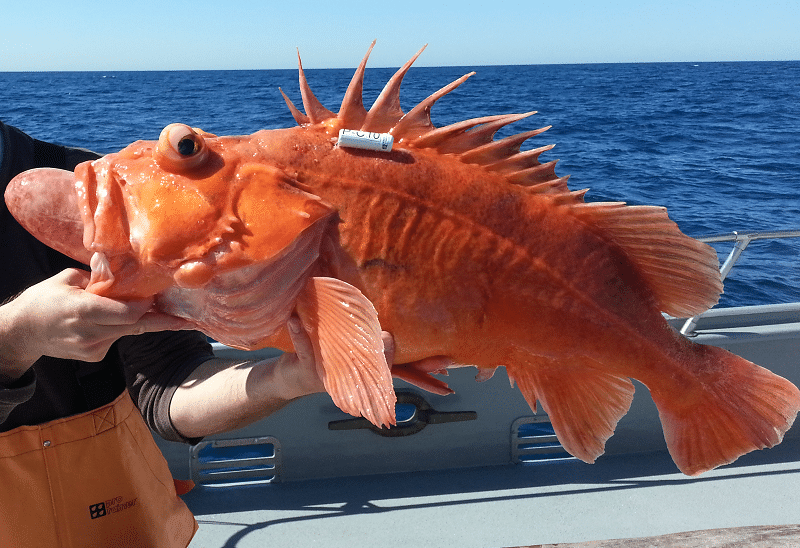
Long-term research by the National Oceanographic and Atmospheric Administration (NOAA) Fisheries division indicate that techniques for returning Pacific rockfish to deep water using descending devices lose effectiveness as the depth at which the fish is caught increases.
While barotrauma-related mortality rates versus depth varies among the 60-plus species of rockfish, there is one commonality in field studies that spanned 15 years: No rockfish caught at a depth greater than 600 feet survived after being returned with a descending device, according to the collective data. The studies are particular relevant now that California anglers can fish at unlimited depths in many areas for the 2023 rockfish season.
Rockfish Studies Using Acoustic Tags
Methodology for gauging survival of the rockfish included long-term acoustic tags, recompressing captive fish in compression chambers, and underwater video evidence of fish being descended in cages.
How does that compare with shallower depths: Consider the cowcod, a large and iconic protected species in California requiring immediate release after being caught. Cowcod experienced survival return rates as high as 97 percent when caught at depths as great as 180 feet. That rate dropped to 70 and 62 percent at depths as great as 300 and 600 feet, respectively. Another large protected species, the yelloweye rockfish, experienced similar survival rates. Both species are classified under the “demersal” group of rockfish in the NOAA study.
Rockfish species classified under the study’s “dwarf” and “pelagic” groups (which included species such as squarespot rockfish and bocaccio, respectively) did not fare as well as those in the demersal group. The dwarf group experienced mortality rates as high as 100 percent at depths from 300 to 600 feet, while pelagic rockfish had a 92 percent mortality rate at the same depths.
Silver Linings
What’s the upshot for anglers? “In would encourage people who catch rockfish at depths greater than 100 fathoms to retain those fish, unless they are protected species that must be returned,” says Daniel Studt, recreational fishing coordinator for NOAA’s Sustainable Fisheries Division for the West Coast.
“Also, if you are in an area where you are catching protected rockfish species, move on the next rockpile,” Studt adds, noting that the release of protected species with descending devices might not be effective depending on the depths that they are fishing.
To learn more about rockfish barotrauma, recompression research, and descending devices and techniques, visit fisheries.noaa.gov/west-coast/recreational-fishing/rockfish-barotrauma-and-recompression.









